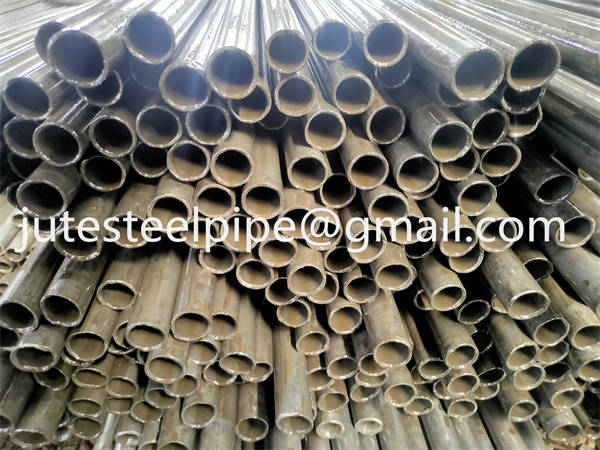1.Why does the quenching and bending occur?
Quenched bending occurs during heating and quenching cooling.What happens in heating is sagging bending, and the reason for bending in cooling is uneven cooling.The faster the cooling speed, the more likely it is to make the cooling uneven, so the water cooling is the most prone to quenching and bending, followed by oil, heat bath, air (cooling order gradually reduced.If the cooling is uneven, the fast cooling side is initially concave, and when the whole part is cooled, it becomes convex.
Also, using inappropriate support in heating will cause quenching bending, and processing stress will also cause quenching bending.
2. How does the quenched bending behave?
Because the first cooling side in the quenching is the hardened side, this side becomes convex.. In contrast, the sagging bend is shown in the original curved shape.
3. Cooling method and quenching and bending
As mentioned previously, the quenched bending parts are caused by the uneven cooling.Similarly, if the heated part is not evenly cooled, the first cooling side becomes convex, in the moment of quenching, the first cooling side becomes concave, and when the whole part is completely cooled, it in turn becomes convex.Figure 3 and Figure 2 shows this relationship.This reversal occurs when there is a temperature difference between the first cooling side and the slow cooling side, and the thin-walled parts that do not form this temperature difference. There is no such reversal, and the first cooling side keeps the concave shape unchanged.The reversal phenomenon must have a certain degree of wall thickness, the wall thickness of about 15~20 mm above the original to appear this reversal phenomenon..
In short, the general quenching parts belong to this case.And why the fast-cooling side is convex?That’s because the side that cooled first contracts, keeping the slowly cooling side compressed.For this reason, the slow cooling side is shorter than the proper length at that temperature, and in this state, when the whole part is cooled, the cooling side rises first, while the slow cooling side is concave. When the whole part is not heated, but only one side of the heating, if only the surface is quickly cooled down, the heated surface will become concave.Because one side is heated, no matter how fast this side is cooled, it is slower than the unheated side. The unheated side is equal to cooling at infinite speed, so the cooling is fast, so that the unheated side is convex.In other words, the fast-cooling side becomes convex.
Heating that uses this principle is called linear heating, which is the way to bend thick steel plates.That is, the oxygen-acetylene flame nozzle only on the thick plate to line fast heating, heating and then with water cooling.Turn the steel plate up at a right angle in a straight line.That is, such a heating method must be bent.It is clear that this heating must be below the critical temperature.It would be bad to be quenched.If the heating temperature is not well controlled and quenching, the expansion of martensite suppresses the warping of the plate, then the above results are not obtained.The Japanese knife uses quenched warping. Although it is cooled after heating, the fast cooling blade protruding because the blade is thin and the back is thick, and the cooling is uneven. Here, the back of the knife is concave and becomes warped.Plus the expansion of martensite in quenching, warping
Shandong Jute Steel Pipe Co.,Ltd.
Contacts: Mr. Ji
WhatsApp: +86 18865211873
WeChat: +86 18865211873
E-mail: jutesteelpipe@gmail.com
E-mail: juteguanye@aliyun.com
Post time: Mar-13-2022








